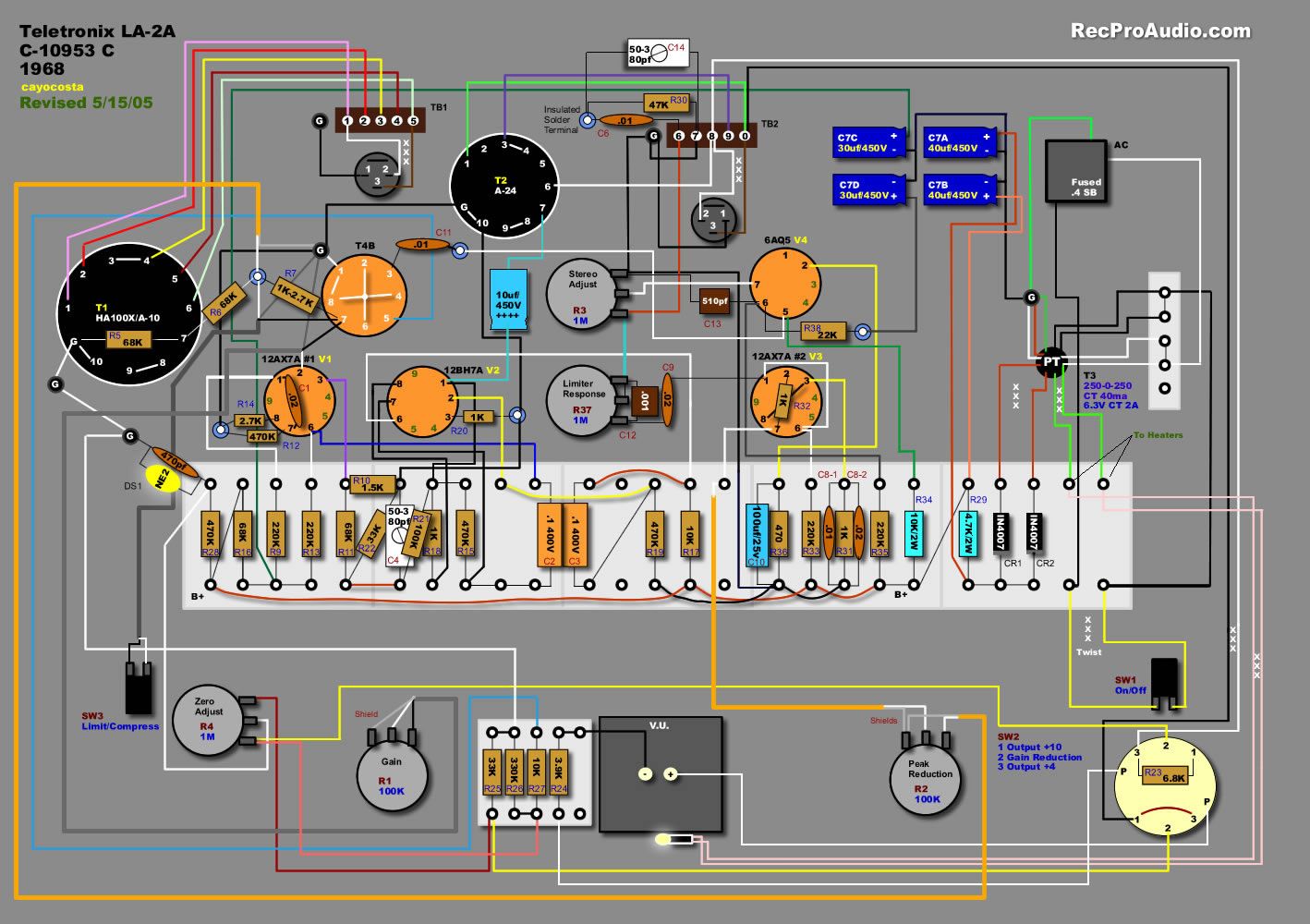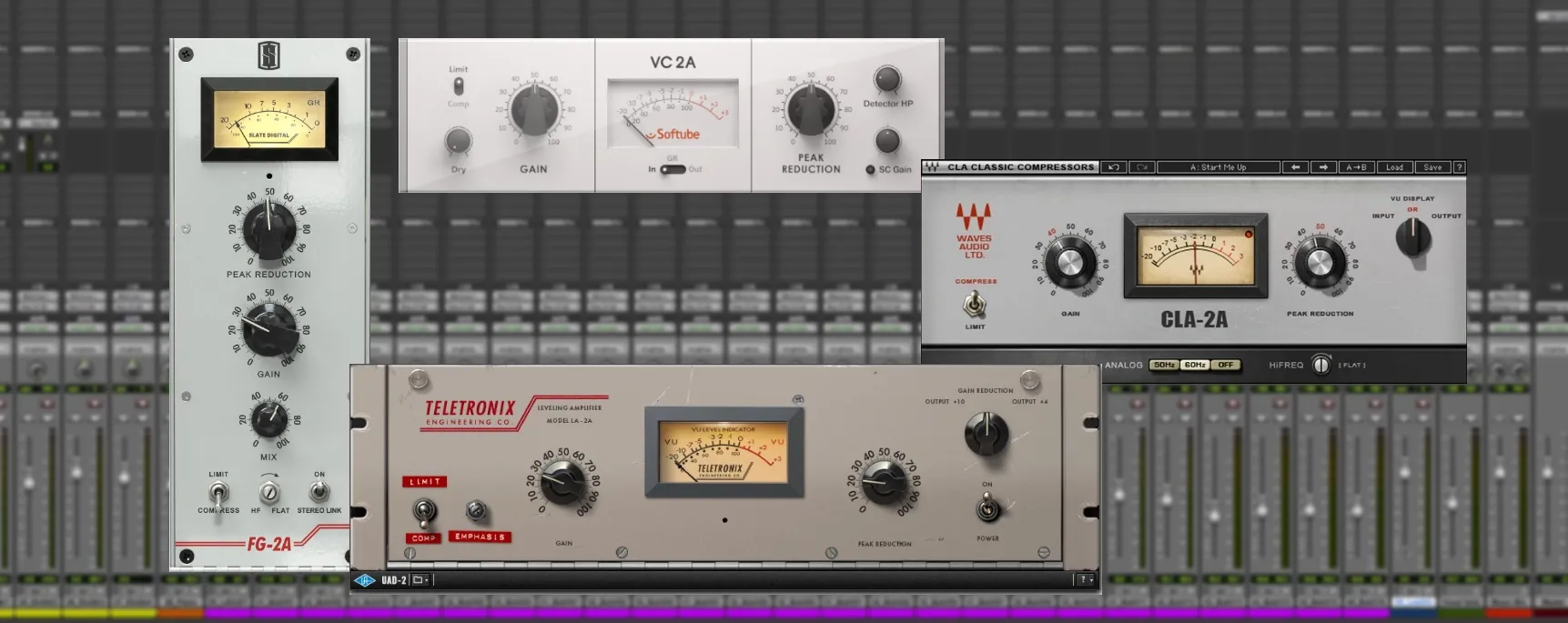The Iconic TELETRONIX LA-2A, & Why It's Still Relevant Today
Like many great inventions, the LA-2A was created due to a need when Jim Lawrence became frustrated having to constantly ride channel gain to ensure a constant output level for radio broadcasts. This spawned the idea for creating a unit that could automatically adjust the input and produce a fairly constant output level.
Drawing upon his knowledge as an electrical engineer, and working with the U.S. Missile program in the military, Lawrence had the groundbreaking idea to use optical sensors in the input circuit to level the audio, and then combined this with a luminescent panel utilizing photo resistors that reacted to the changes in light and intensity then sealed this in a metal canister that is now know as the T4. This brilliant design give the LA-2A its famous smooth compression and sound that can still be heard on many major records being made today.
Inside the LA-2A
Digging into the T4 optical attenuator it has dual cadmium-sulfide photo resistors where one resistor controls the gain reduction, and the other is for the VU meter in Gain Reduction mode. The T4 also has a electro-luminescent panel that reacts to the input signal, as a higher input increases the brightness for the panel, and a decreased input lowers the brightness which in turn reduces the resistor's impedance creating a very musical
In the world of gain reduction units, the LA-2A is on the slower side in reaction time at 10 milliseconds, but this also helps contribute to the smooth gain reduction the unit is known to achieve. The T4 unit is definitely what the LA-2A is most known for, but the tube circuit is also a favorite for many to also use the unit as a pre-amp when recording.

The heart and soul of the LA-2A is in the T4 cell. All of the characteristics are right there. The photocell and the physics behind it are what immediately result in the two-stage release.” - Bill Putnam Jr.
The history of the LA compressor
The first Teletronix units, the LA-1, were produced in 1958 after Jim Lawrence founded the Teletronix Engineering Company in Pasadena. The LA-1 were his first work and extremely rare today as there were roughly 100 units created.
Shortly after the LA-2 was created which was where the T4A optical attenuator first appeared, along with design changes showing off a larger VU meter, along with swapping out the multi-position toggle switch in favor of a rotary switch. The LA-2 quickly worked its way into the CBS studios, and RCA studios in Nashville and New York and continued to spread throughout the nations recording studios.
Several years later in 1962, the second version now known as the LA-2A was released to clean up the interior wiring to decrease the noise floor, along with featuring a gray faceplate. In 1965 Babcock Electronics bought Teletronix, before being bought itself by Studio Electronics (later known as UREI) who continued to manufacture the LA-2A but changed the faceplate to silver instead of grey.
UREI continued to launch more limiting amps with the T4 optical attenuator, but decided to use the new solid-state technology instead of the vacuum tube circuitry for the LA-3A, LA-4, and LA-5 causing LA-2A sales to decline until it was discontinued in 1969. There were two limited edition runs in the 70's and again in the 80's as used prices started to drastically increase.
The LA-2A resurgence
It wasn't until 1999, when Bill Putman Jr. restarted Universal Audio that the LA-2A went back into production, as they spent a large amount of time carefully analyzing the original T4 unit so they could accurately recreate the 60s photocells, and even went so far as to acquire the original equipment used to make the original LA-2A units.
This lengthy process along with Universal Audios research for their DSP plugin in 2001 helped refine the proper response for the T4, as modern photocells are created to be as quick as possible, which was not the case with the original units. Universal Audio is just one of the many plugin creators for the LA-2A as popular options include versions created by Waves, Native Instruments, brainworx, and even AVID among others.

Even with the ever growing number of plugin units, Universal Audio is still reporting that sales of the hardware units are continuing to climb which is a testament to the original design created decades ago.
The LA-2A sound
The LA-2A is best known for its smooth compression that can be cranked into distortion when driving the pre-amp circuit as the LA-2A can provide 40dB of gain in the unit itself. The leveling amplifier is controlled with two knobs that affect the peak reduction and gain, but perhaps its most known quality is the release which is best heard on vocals. The T4 optical attenuator itself in the LA-2A is dependent on both the program and frequency, as it allows the compression ratio to drastically vary based on the input source. The initial release time is approximately 60 milliseconds for 50% of the release, with the following 50% happening gradually over a period of 1 to 15 seconds before the signal returns to 100%, but the timing of the release depends heavily on the length and strength of the incoming signal. Also, if there is heavy compression applied or the signal is above that will cause the release to be slower. If the signal is below the threshold, then the release will be much faster, as this release can be easily seen and monitored with the VU meter on the front of the unit.
The LA-2A can be heard on vocals for iconic tracks such as Diamond hit song Nevermind by Nirvana, Shakira's multi-platinum Hips Don't Lie, and countless other hits throughout the decades.


